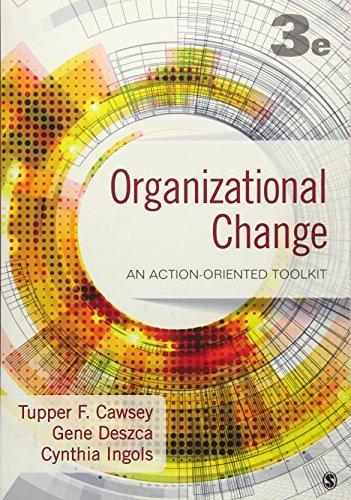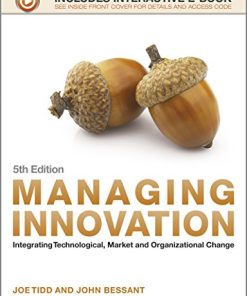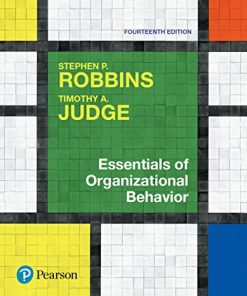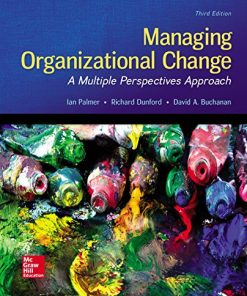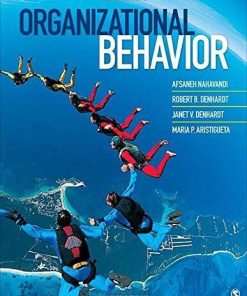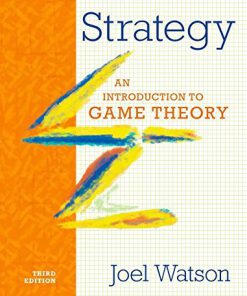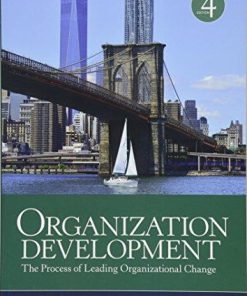Organizational Change: An Action-Oriented Toolkit Third Edition – Ebook PDF Version
$50.00 Original price was: $50.00.$25.00Current price is: $25.00.
Organizational Change: An Action-Oriented Toolkit Third Edition – Ebook PDF Version – Digital Instant Dowload.
Organizational Change: An Action-Oriented Toolkit Third Edition – Ebook PDF Version – Digital Instant Dowload.
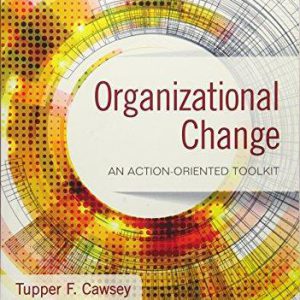
Product details:
- ISBN-10 : 1544351402
- ISBN-13 : 978-1544351407
- Author: Gene F. Deszca (Author), Cynthia A. Ingols (Author), Tupper F. Cawsey (Author)
In today’s world, organizational resilience, adaptability and agility gain new prominence. Awaken, mobilize, accelerate, and institutionalize change with Organizational Change: An Action-Oriented Toolkit. Bridging theory with practice, this new edition uses models, examples, and exercises to help students engage others in the change process. Authors Gene Deszca, Cynthia Ingols, and Tupper F. Cawsey provide tools for implementing, measuring, and monitoring sustainable change initiatives and helping organizations achieve their objectives. The Fourth Edition includes new critical thinking exercises, cases, checklists, and examples as well as updated coverage of key topics such as social media, power dynamics, decision testing, storytelling, and control systems.
Table of contents:
Chapter 1: Changing Organizations in Our Complex World Defining Organizational Change The Orientation of This Book Environmental Forces Driving Change Today The Implications of Worldwide Trends for Change Management Organization Change Roles The Requirements for Becoming a Successful Change Leader Summary
Chapter 2: Frameworks for Leading the Process of Organizational Change Differentiating How to Change From What to Change The Processes of Organizational Change Application of the Change Path Model Summary
Chapter 3: Frameworks for Diagnosing Organizations Open Systems Approach to Organizational Analysis The Nadler and Tushman Congruence Model Sterman’s Systems Dynamics Model Quinn’s Competing Values Model Greiner’s Model of Organizational Growth Stacey’s Complexity Theory Summary
Chapter 4: Building and Energizing the Need for Change Understanding the Need for Change Assessing the Readiness for Change Developing a Powerful Vision for Change The Difference Between an Organizational Vision and a Change Vision Summary
Chapter 5: Navigating Change Through Formal Structures and Systems Making Sense of Formal Structures and Systems Impact of Uncertainty and Complexity on Formal Structures and Systems Using Structures and Systems to Influence the Approval and Implementation of Change Developing Adaptive Systems and Structures Summary
Chapter 6: Navigating Organizational Politics & Culture Power Dynamics in Organizations Organization Culture & Change Understanding the Perceptions of Change Summary
Chapter 7: Managing Recipients of Change and Influencing Internal Stakeholders Stakeholders Respond Variably to Change Initiatives Responding to Various Feelings in Stakeholders Make the Change of the Psychological Contract Explicit and Transparent Integrity is One Antidote to Skepticism and Cynicism Avoiding Coercion but Pushing Hard: The Sweet Spot? Creating Consistent Signals From Systems and Processes Steps to Minimize the Negative Effects of Change Make Continuous Improvement the Norm Encourage People to Be Change Agents and Avoid the Recipient Trap Summary
Chapter 8: Becoming a Master Change Agent Factors That Influence Change Agent Success Developing Into a Change Leader Developmental Stages of Change Leaders Internal and External Consultants: Specialized, Paid Change Agents Summary
Chapter 9: Action Planning and Implementation Without a “Do It� Orientation, Things Won’t Happen Prelude to Action: Selecting the Correct Path Plan the Work Action Planning Tools Working the Plan Ethically and Adaptively Transition Management Summary
Chapter 10: Measuring Change Using Control Processes to Facilitate Change Selecting and Deploying Measures Control Systems and Change Management Other Measurement Tools Summary
Chapter 11: Summary Thoughts on Organizational Change Putting The Change Path Model into Practice Future Organizations and Their Impact Becoming an Organizational Change Agent: Specialists & Generalists Paradoxes in Organization Change Orienting Yourself to Organization Change Summary
You may also like…
Uncategorized
Biology and Microbiology
Clinically Oriented Anatomy Eighth North American Edition – Ebook PDF Version
Uncategorized
Managing Organizational Change: A Multiple Perspectives Approach 3rd Edition – Ebook PDF Version
Uncategorized
Strategy: An Introduction to Game Theory (Third Edition) 3rd Edition – Ebook PDF Version
Uncategorized
Organization Development: The Process of Leading Organizational Change – Ebook PDF Version


